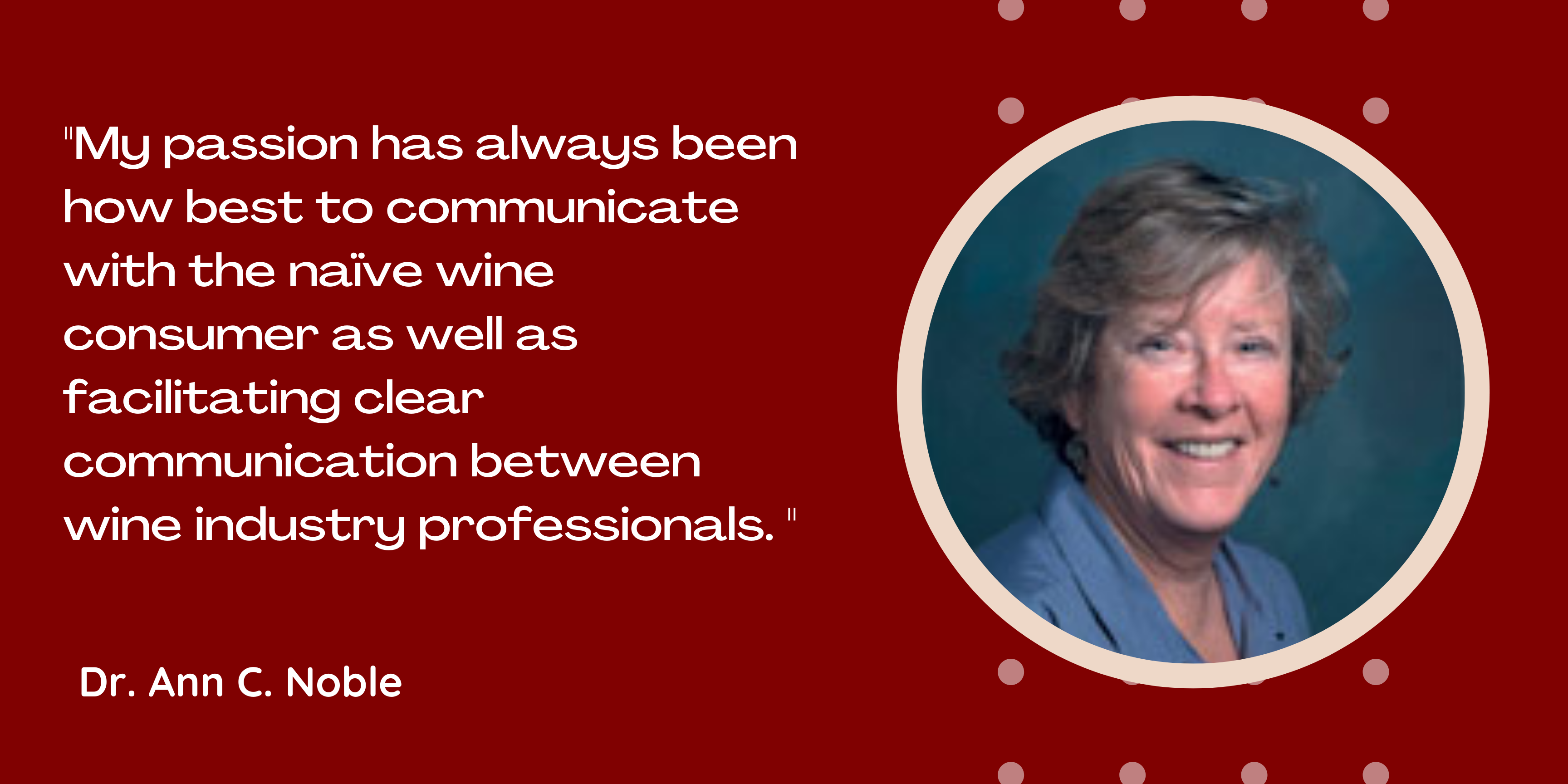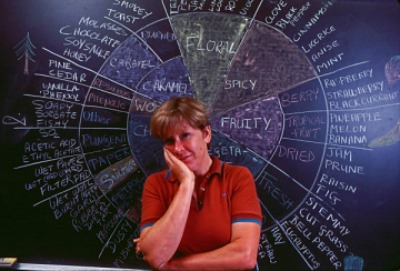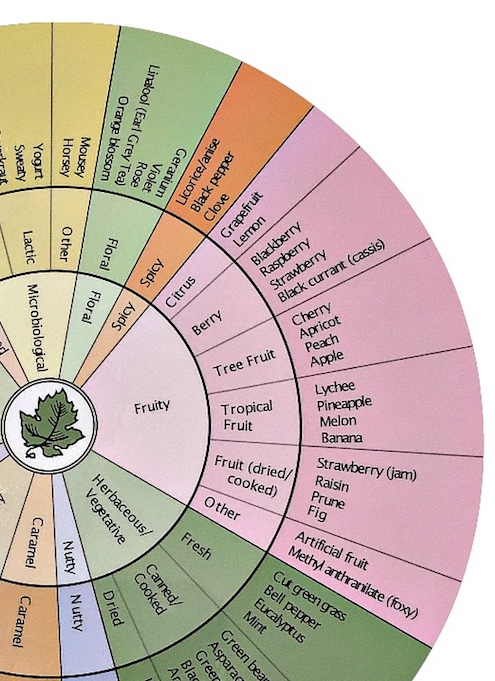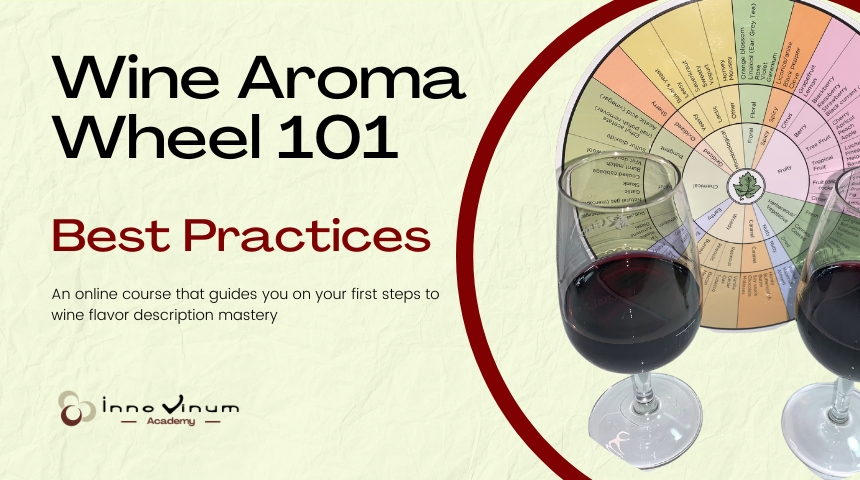Unveiling the Magic Behind Ann Noble Wine Aroma Wheel
The intent behind Ann Noble Wine Aroma Wheel can be summarized by what Ernest Hemingway once said, "a person with increasing knowledge and sensory education may derive infinite enjoyment from wine."
The Wine Aroma Wheel is indeed the essential tool you need to start your wine sensory education, a.k.a. wine tasting.
In this article, I take you through the origins of Ann Noble Wine Aroma Wheel. You’ll also discover how to effectively use it and the many benefits it brings to your wine education and appreciation.
Why Ann Noble created Wine Aroma Wheel
Let's start by addressing the big question: why was the Wine Aroma Wheel created?
The answer is simple and yet profound.
The wine aroma wheel was created to facilitate communication among wine drinkers and wine professionals.
When I started working in the wine industry, the conversations were full of jargon and acronyms. People were arguing with each other about what each wine tasted like.
For many novice wine drinkers, listening to sommeliers' and experts' wine taste descriptions can be overwhelming and intimidating.
However, speaking the same wine language is critical for your wine education and enjoyment. It provides a common vocabulary, enabling everyone to express their experiences and perceptions precisely when talking about wine.
The Development of the Wine Aroma Wheel
Ann Noble Wine Aroma Wheel wasn't just dreamed up overnight, it was a carefully designed tool shaped by thorough research and expert knowledge.
Dr. Ann C. Noble was a sensory chemist and Professor at the University of California, Davis, when she developed the wheel in the 1980s.
She wanted to address the vague and subjective language commonly used at the time to describe wine aromas. Phrases like "harmonious," "elegant," or "balanced" were often thrown around, leaving wine descriptors open to interpretation.
Dr. Noble recognized the need for precision in the sensory evaluation of wines, especially because this subjective wine language was a hindrance to her wine research, and thus, this handy tool was born.
 cited in Planete Grapes [1]
cited in Planete Grapes [1]She needed precise descriptors that she would relate to the wine chemical composition. Because her research would help understand how specific practices in the vineyard or the cellar could change the wine aromatic profiles.
So she decided to help these wine tasters. And she created with her students a tool to teach people how to categorize wine aromas.
In collaboration with her students and the American Society of Oenology and Viticulture, Ann Noble embarked on a mission to revolutionize the way people articulate their perceptions of wine aromas.
The first iteration of the Wine Aroma Wheel emerged in 1984 and underwent refinement in 1987 to encompass a broader spectrum of descriptors [Link to the paper].

This tool was designed to provide a standardized framework for a novice taster to decompose the aromas perceived in a glass of wine into categories.

The list of 83 aroma descriptors is organized in three tiers on a circle (the wheel).
First, 11 categories located at the center of the wheel describe the generic aroma families (fruity, floral, etc.)
These categories break down in the middle section into 25 subcategories. For example, Tree fruits, citrus, or Berry are part of the Fruity category.
And the most specific terms are on the outer tier.
How to Use the Wine Aroma Wheel
Using Ann Noble Wine Aroma Wheel is as easy as enjoying a glass of wine.
Start from the center of the wheel with the most general descriptors, and work your way out to the more specific ones.
For example, if you notice a fruity aroma, you can then identify whether it's more citrus, berry, or tropical fruit.
As you focus your attention, you may even discern whether that citrus aroma reminds you more of lemon, lime, or grapefruit!
Wine can contain more than 800 aromatic compounds, creating more than the 80 different scents listed on the Wine Aroma Wheel.
Thus, the Wine Aroma Wheel terms are not the only terms you can use to describe wines, but they represent the ones you'll most often perceive in white or red wines.
How Using the Ann Noble Wine Aroma Wheel ELEVATE YOUR WINE TASTING SKILLS
The benefits of using the wine aroma wheel are as diverse as the aromas it describes. It not only helps you articulate your wine experiences, but it also enhances your overall enjoyment of wine.
A tool backed by science
Indeed, research studies [2, 3] have demonstrated the efficiency of the Wine Aroma Wheel in enhancing your wine education.
Its benefits are twofold.
- Firstly, it facilitates the memorization of your tasting experiences through a more structured approach to wine taste description.
- Secondly, it guides you through the description process so you understand what to look for during wine evaluation.
By identifying the different aromas, you’ll be better equipped to recognize what you like and don't like in a wine, making your future wine selection process easier and more enjoyable.
And if you’re a wine student, you’ll learn to associate specific aroma descriptors with specific wine styles, which will help you in future blind tastings.
Learning Wine Aromas made easier
Learning wine aromas can seem daunting, but with the wine aroma wheel, this process becomes an exciting exploration. By using this tool regularly, you'll start to recognize common aromas and even pick up on subtler nuances.
I developed a comprehensive short course to learn the fundamentals of tasting with the wine aroma wheel.
So, why take your wine aroma wheel to your next wine tasting or wine class?
It's a handy tool that can make a big difference in your wine journey.
Praised by the media and experts
The wine aroma wheel has received well-deserved recognition and praise from wine enthusiasts and professionals alike.
Ann Noble’s work received praise in prominent media outlets, such as The New Yorker, the Wall Street Journal or the Wine Spectator. Bob Campbell, a master of wine, even suggested that if there were a Nobel Prize for wine, it should rightfully be awarded to the lady behind the Wine Aroma Wheel, highlighting its profound impact on wine education and communication.
Ann Noble’s Wine Aroma Wheel has become an indispensable tool in wine education, used in wine classes and tasting rooms. Its influence has even reached beyond the wine world, inspiring aroma wheels for other beverages like coffee, tea, and chocolate.
In conclusion
Ann Noble's wine aroma wheel was created to make the beautiful complexity of wine more accessible to everyone.
It's a bridge between wine professionals and wine lovers, facilitating a shared language and deepening our appreciation for this delightful beverage.
So, let's raise a glass to the wine aroma wheel - a true revolution in the world of wine!
featured in
References
- Fallis, C. Origin of the Wine Aroma Wheel, Dr. Ann Noble, Planete Grapes, May 22, 2014
- LaTour, K. A., & LaTour, M. S. (2010), Journal of Consumer Research, 37 (4), 688-697
- LaTour, K., & Deighton, J. (2018). Learning to become a taste expert. Harvard Business School Research Paper Series #18-107.
- Teague, L. The Tool That Transformed Wine Tasting, WSJ, October 2, 2020
- Bosker, B. Is There a Better Way to Talk About Wine? The New Yorker, July 29, 2015
- Hunt, M. How Ann Noble and the Wine Aroma Wheel Revolutionized the Industry Wine Enthusiast, June 6, 2022



